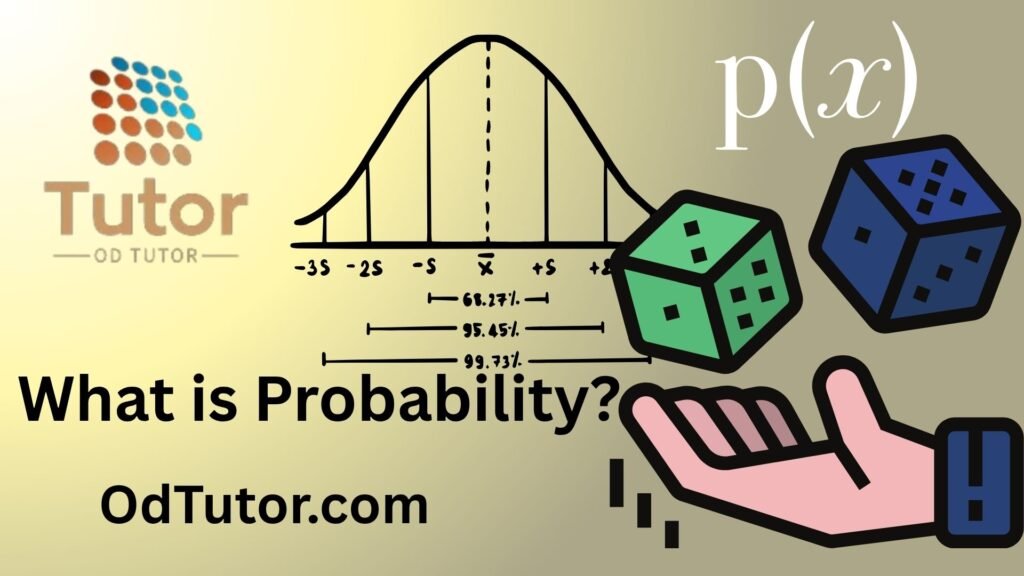Title: Understanding Probability – A Beginner’s Guide by Rahul Chaudhary (IIT-JEE Maths Expert)
Introduction
Hi students! I’m Rahul Chaudhary, and today, we’re diving into a fascinating topic in mathematics — Probability. This chapter is not only a vital part of your IIT-JEE syllabus, but it also forms the basis of logical thinking and decision-making in real life. Whether you’re playing cards, rolling dice, or predicting weather, probability is at work everywhere!
You can view my profile here : Rahul Chaudhary Maths
Let’s begin with the basics.
🌟 What is Probability?
In simple terms, Probability measures how likely an event is to happen.
Mathematically,

Let’s understand this through an example.
Example:
Suppose we toss a fair coin. What are the possible outcomes?
→ Heads (H) or Tails (T). That’s two outcomes.
Now, what’s the probability of getting a head?
→ There’s only 1 favorable outcome (Head) out of 2 total outcomes.
So

🧠 Why is Probability Important?
- IIT-JEE Perspective:
Probability has weightage in both JEE Main and JEE Advanced exams. You’ll face MCQs and integer-type questions based on concepts like independent events, conditional probability, and Bayes’ Theorem. - Real-life Use:
From cricket match predictions to Google search suggestions, probability helps machines and people make decisions based on logic.
🔑 Key Terms in Probability
Here are some essential terms every IIT-JEE aspirant must master:
- Experiment: An action like tossing a coin or rolling a die.
- Sample Space (S): The set of all possible outcomes.
- Event (E): A subset of the sample space. (e.g., getting an even number on a die roll)
- Favorable Outcomes: The outcomes that satisfy the event condition.
- Equally Likely Outcomes: When all outcomes have the same chance of occurring.
🎲 Common Examples You’ll Encounter
- Tossing 2 coins → Sample space = {HH, HT, TH, TT}
- Rolling a die → Sample space = {1, 2, 3, 4, 5, 6}
- Drawing cards from a deck → Sample space = 52 outcomes
You’ll be using combinatorics, sets, and logic in most IIT-JEE probability problems, so it’s important to revise those topics too.
🏁 Final Words from Rahul Sir
Probability is one of those chapters that combines logic with numbers. Many students fear it because it feels abstract. But with practice and the right mindset, you’ll realize it’s like solving a puzzle — fun and rewarding!
In my classes, I always say: Don’t just memorize formulas. Understand the concept, visualize the experiment, and then apply the logic.
Stay curious, keep practicing, and you’ll master this chapter in no time.
🎓 Join My Masterclass for More!
If you want to learn Probability the smart way and solve JEE-level questions with full confidence, check out my full lectures and practice sessions.

